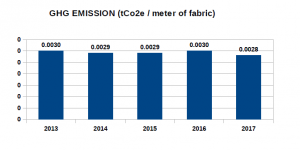We are commited to a greener planet.

Solvent Plant
Biomass power
Biomass is a fuel that is developed from organic materials, a renewable and sustainable source of energy used to create electricity or other forms of power.
Biomass power is carbon neutral electricity generated from renewable organic waste that would otherwise be dumped in landfills, openly burned, or left as fodder for forest fires.
In biomass power plants, wood waste or other waste is burned to produce steam that runs a turbine to make electricity, or that provides heat to industries and homes. Fortunately, new technologies — including pollution controls and combustion engineering — have advanced to the point that any emissions from burning biomass in industrial facilities are generally less than emissions produced when using fossil fuels (coal, natural gas, oil).
Environmentally, biomass has advantages over fossil fuels such as coal and petroleum. Biomass contains little sulfur and nitrogen, so it does not produce the pollutants that can cause acid rain,mine spoils, open pits, oil spills, radioactive waste disposal or the damming of rivers . Burning biomass releases carbon dioxide, but growing plants for use as biomass fuels may also help keep carbon dioxide levels balanced. Plants remove carbon dioxide—a greenhouse gas —from the atmosphere when they grow.
Rice bran as a biomass
Rice Bran is the agricultural residue in rice producing countries around the world. It is one of the major by-products from the rice milling process and constitutes about 20% of paddy by weight. De Oiled Rice Bran can be used as biomass.
We at KGDL have our own solvent plant to extract oil from Rice Bran and produce residue De Oiled Rice Bran for use as biomass in our power plant.
KGDL IS THE FIRST “USING BIOMASS” IN TEXTILE SECTOR which goes show how much “WE CARE THE ENVIRONMENT”
Energy Efficiency
The Turbine extraction pressure has been modified to Lower pressure in order to use high latent heat and get more power.
Condensate recovery systems have been installed in all the indirect steam usage points.
PLC controlled control valves for heating is provided to have accurate control
Vfd for all higher hp motors to get more energy conservation at lower capacity utilization
State of the Art imported Air to Air heat recovery system used in stenters
As a policy it has been decided to use only Energy efficient motors and to remove old generation motors in phased manner.
Investments have been mooted to induct High efficient and less energy consuming Looms
Water Conservation
Effluent Treatment Plant :
KG Denim Ltd follow the concept of Zero Liquid Discharge. We have Zero Liquid Discharge effluent treatment plant at an investment of 15 Crores with treatment and recycling capacity of 27.75 Lakhs liter per day. The Effluent treatment plant is fully equipped with advanced technologies like RO system, Evaporator etc., in addition to basic treatment. The entire water treatment plant is continuously monitored through on-line control system. Textile effluent and power plant blow down water are treated at ETP 99% recycled back to process. The treated water quality is well beyond the pollution control board requirements. The quality of water is monitored continuously through in-house laboratories and same is ensured at outside laboratories at frequent intervals.
We strive for Clean and Green Environment!
Reduced Green house emissions

A commitment to green house gas emission reduction and environmental protection in general aligns
with our sustainability vision with our strategic imperative to achieve a competitive cost structure.
KGDL has achieved ISO14064 Green House Gas certification using part I guidance along with the
WBCSD Green House Protocol. This covers identification of Organizational and Operational
boundaries, identification of Emission Sources, collection of Activity Data & Emission Factors,
emission calculation method and the removals to reduce the GHG emissions
For reducing the adverse environmental impact of its operations, we focus on some areas including
energy and water conservation, minimizing air and GHG emissions including flaring, reducing the
generation of waste and protection of biodiversity across the locations.
KGDL’s measuring & monitoring the GHG emissions since 2013. Through external agencies yearly
once GHG emissions data are verified.
The utilized GHG Emission sources are LPG, Lignite, Steaming coal, Non coking coal, Diesel,
Floran-22 Gas , Electricity, Soda Ash, De oiled bran, Paddy Husk, Sawdust and Charcoal
The biomass consumption in the boiler and thermopac are reported separately as direct GHG
emissions (scope 1) in the GHG Inventory as per the GHG protocol guidance.
Based on the emission sources we have collected the consumption details for all sources and also
collected the emission factors from GHG protocol and other relevant public sources.
Reduction of carbon emission is planned through reducing fossil fuel consumption and increasing the
biomass
Similarly 90% freon gas air conditioners in the production site are replaced by introducing gas free
VAM technology.
In the year of 2017 with the help of forest officer, 1000 nos of Eco friendly trees were planted
inside the factory campus to reduce carbon emission.
GHG Emission measuring and monitoring started from 2013 and the trend is described in the below graph







